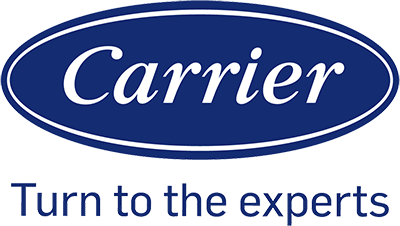Fundamentals of HVAC Systems

HVAC systems play a crucial role in maintaining indoor comfort by regulating temperature, air flow, and humidity levels. We’ll explore the various components that make up these systems and the principles behind their heating and cooling functions.
Essential HVAC Components
The heart of an HVAC system lies in its key components that work together to heat and cool a space. These include:
- Thermostat: Serves as the user interface and temperature regulator.
- Air Handler: Circulates conditioned air throughout the building.
- Filters: Trap dust, allergens, and other airborne particles to maintain air quality.
- Ducts: Channels through which air travels to different rooms.
- Vents: Openings that deliver air into rooms and allow for air circulation.
- Compressor: Pumps refrigerant necessary for heat exchange.
- Condenser Coil: Releases heat from the refrigerant into the outdoor air.
- Evaporator Coil: Absorbs heat from the indoor air to cool it down.
- Refrigerant: Chemical fluid that carries heat and facilitates heat exchange.
These components are designed to function seamlessly for optimal performance and comfort.
Heating and Cooling Principles
The principles of heating and cooling in HVAC systems rely on thermodynamics, fluid mechanics, and heat transfer.
Heating:
- When the thermostat detects a temperature lower than the setpoint, it activates the heating component.
- The furnace or heat pump generates heat which is then distributed by the air handler.
- Heat is transferred from the heating element to the air and circulated by the ducts.
Cooling:
- During cooling, the thermostat signals the system when indoor temperatures exceed the desired level.
- The compressor pumps refrigerant to absorb excess heat at the evaporator coil, which is then released outside via the condenser coil.
- This process creates a cooling effect, and the air handler circulates the cool air through the ducts and into various spaces.
Heating and cooling cycles are essential for maintaining the desired indoor temperature and ensuring the comfort of the occupants.
Key HVAC System Components

HVAC systems are intricate networks of components working together to provide comfortable indoor environments. We will explore the function of essential HVAC parts including the air handler, blower motor, evaporator coil, condenser coil, and the path refrigerant takes in the system.
Understanding the Air Handler and Blower Motor
The air handler is the indoor component of our HVAC system responsible for the movement of air throughout the ductwork. Within the air handler, the blower motor propels air, which ensures consistent air circulation. The blower’s performance is critical as it affects the efficiency of the entire system, determining the volume of air moved and the speed at which it is delivered.
The Role of the Evaporator and Condenser Coils
Our air conditioning system relies on two primary coils: the evaporator coil and the condenser coil. Situated inside the air handler, the evaporator coil absorbs heat from the indoor air, cooling it down. Conversely, the condenser coil, part of the outdoor unit, releases the absorbed heat into the outdoor air.
| Coil Type | Location | Function |
|---|---|---|
| Evaporator | Indoor Unit | Absorbs heat from the indoor air |
| Condenser | Outdoor Unit | Releases absorbed heat to the outdoor air |
Refrigerant’s Journey Through the System
Refrigerant plays a pivotal role in our HVAC system; it’s the fluid substance that absorbs and releases heat during the refrigeration cycle. The compressor pumps the refrigerant, raising its pressure, which in turn escalates its temperature for the heat exchange process. The condenser coil then cools the heated refrigerant, condensing it into a liquid form that flows to the evaporator where it’ll absorb indoor heat. Upon absorbing heat, the refrigerant evaporates and returns to the compressor to repeat the cycle. This continuous movement allows us to regulate temperatures effectively, facilitating both heating and cooling processes.
- Refrigerant absorbs indoor heat. ✔️
- Compressor pressurizes refrigerant. ✔️
- Condenser coil releases heat outdoors. ✔️
- Refrigerant returns to the evaporator. ✔️
By understanding these key components, we grasp the core functions of HVAC systems, empowering us to maintain and optimize our indoor climate control systems efficiently.
Enhancing Indoor Air Quality and Comfort

To ensure optimal indoor air quality and comfort, it’s essential to focus on effective ventilation and filtration coupled with precise humidity and temperature control. These components work synergistically to maintain a healthy and comfortable indoor environment while promoting energy efficiency.
Ventilation and Filtration Solutions
Proper ventilation is vital in maintaining indoor air quality. We recommend combining natural ventilation (such as windows and vents) with mechanical systems like HVAC units to achieve continuous air exchange. This is essential for diluting indoor pollutants. In terms of air filtration, High-Efficiency Particulate Air (HEPA) filters play a crucial role in trapping particulates, such as dust, pollen, and other allergens, ensuring that the air we breathe is clean.
Here’s a quick look at filter efficiency standards:
| Filter Type | Efficiency |
|---|---|
| Fiberglass Filters | Less efficient |
| Pleated Filters | Moderate efficiency |
| HEPA Filters | High efficiency |
Regular maintenance of air filters is also a must. We suggest checking filters at least every three months and replacing them as necessary to maintain air quality and ensure energy efficiency.
Controlling Humidity and Temperature
Maintaining the right level of humidity is crucial for comfort and health. Ideally, indoor humidity should be between 30-50%. To achieve this, using dehumidifiers in damp areas and humidifiers in dry conditions can help maintain the balance.
Temperature control is equally important for comfort. Implementing programmable thermostats allows us to set and maintain desired temperature settings throughout the day, which can adapt to the changing needs of the space. The refrigerant flow in the HVAC system should be regulated to provide consistent temperatures, ensuring comfort and energy efficiency. Remember, an HVAC system that is too large or too small for the space can negatively impact both temperature consistency and energy usage.
To maintain desired conditions and system performance, regular HVAC inspections and upkeep are essential. This includes checking thermostats, refrigerant levels, and system components to ensure they are functioning optimally.
HVAC Maintenance and Safety

Proper HVAC maintenance is crucial for system longevity and safety. We will discuss how to conduct routine checks and identify common issues for effective troubleshooting.
Routine Checks and Regular Maintenance
Weekly and Monthly Inspections: It’s important for us to regularly visually inspect our HVAC unit for any signs of wear or damage. This includes checking air filters monthly and replacing them when they’re dirty to maintain airflow and air quality. Filters may need more frequent attention if our environment has high dust levels or if we have pets.
Seasonal Maintenance: At the beginning of heating and cooling seasons, it’s advantageous to schedule maintenance with a certified HVAC contractor. They can perform an in-depth inspection and service, ensuring our system is ready for extreme temperatures.
Safety Measures: We should always make sure that there is no combustible material near the HVAC unit. Regular inspections can also help us spot any potential safety hazards, such as frayed electrical wiring or blocked vents, which must be addressed promptly.
- Filter Replacements: Replace or clean filters every 1-3 months.
- Clearance: Keep at least 2 feet of clearance around outdoor units.
- Thermostat: Test our thermostat periodically to confirm that it’s working correctly.
Identifying Common Issues and Troubleshooting
Noise and Vibration: Strange noises can indicate mechanical issues, such as loose parts or blockages. If we hear rattling, buzzing, or whistling, we should inspect for obstructions or contact a technician if the cause is not apparent.
Temperature Inconsistencies: Should there be a lack of heating or cooling, we would check the thermostat settings first. If the problem persists, it might be due to leaky ductwork, low refrigerant levels, or a failing compressor, requiring professional repair.
System Failures: In case the system fails to turn on, we would check power supplies, including circuit breakers and switches. If these are in order and the problem remains unsolved, it suggests that we need to call an HVAC technician.
Regular Troubleshooting Steps:
- Check the thermostat for correct settings.
- Ensure that all electrical connections are secure.
- Inspect ductwork for leaks if temperature control is an issue.
- Listen for unusual sounds which could point to mechanical failures.
- Observe the HVAC system’s cycles; short cycling often signals a problem.
By adhering to a strict maintenance schedule and knowing how to identify common issues, we can prevent the majority of HVAC system failures while ensuring our environment remains safe and our system operates efficiently.




